Deficiency in red blood cells medical term. Iron Deficiency Anemia: Symptoms, Diagnosis, and Treatment
What is iron deficiency anemia? What are the causes and symptoms of this condition? How can it be diagnosed and treated? Get answers to these key questions.
Understanding Iron Deficiency Anemia
Iron deficiency anemia is a condition where the body has a low number of red blood cells due to an insufficient amount of iron. Red blood cells use iron to produce hemoglobin, a protein that transports oxygen throughout the body. When there is not enough iron, fewer red blood cells are produced, leading to anemia.
Causes of Iron Deficiency Anemia
There are several factors that can contribute to iron deficiency anemia:
Dietary Factors
- Diets low in iron-rich foods, such as meat, poultry, fish, beans, lentils, and fortified cereals
- Excessive consumption of cow’s milk, which can inhibit iron absorption
- Diets that lack a balance of vitamins and nutrients
- Exclusive breastfeeding beyond 6 months without introducing solid foods
Absorption and Blood Loss
- Certain gastrointestinal and inflammatory disorders that impair nutrient absorption
- Heavy menstrual periods or internal bleeding in the stomach, intestines, or urinary tract
Increased Iron Needs
- Pregnancy and breastfeeding, which require higher amounts of iron
- Premature birth, as premature babies need more iron than full-term infants
- Rapid growth spurts in young children, when dietary iron may not be sufficient
Signs and Symptoms of Iron Deficiency Anemia
Many people with mild anemia may not have any noticeable symptoms. However, as the anemia becomes more severe, common signs and symptoms may include:
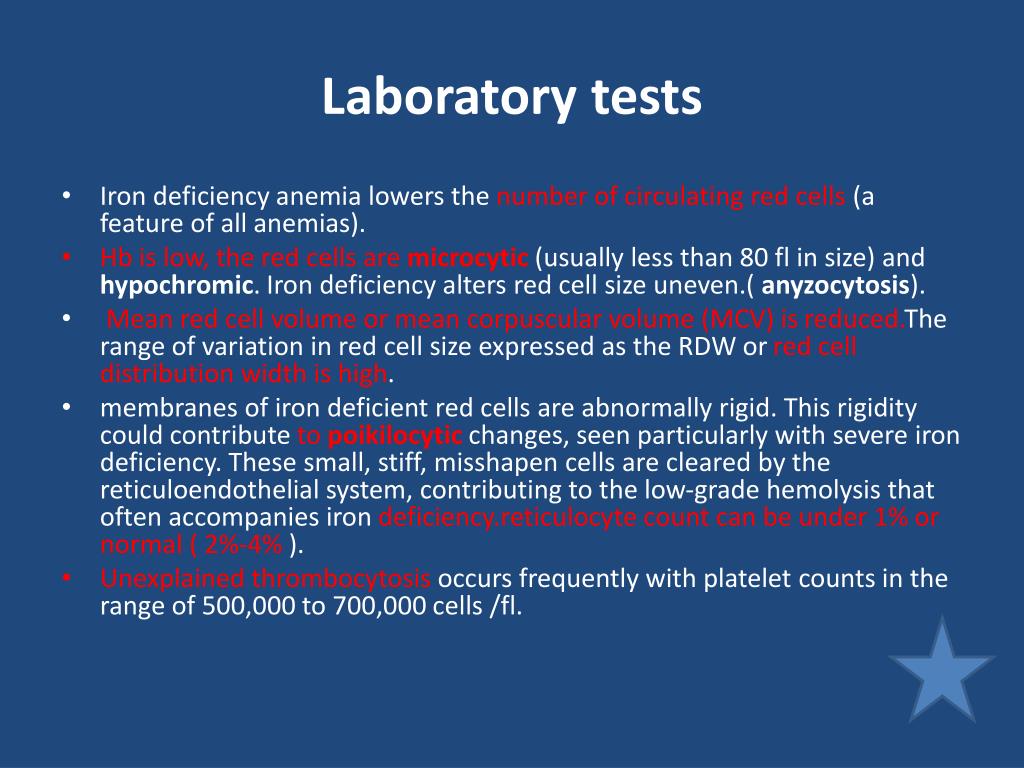
- Weakness and fatigue
- Pale skin
- Headaches
- Loss of appetite
- Changes in fingernails
- Cold hands and feet
- Rapid heartbeat
- Shortness of breath or fast breathing
- Irritability and behavioral changes
- Dizziness or lightheadedness
- Delays in child development or problems with school performance
- Unusual cravings, such as eating dirt or ice (pica)
Diagnosing Iron Deficiency Anemia
Iron deficiency anemia is typically diagnosed through a combination of the following tests:
Complete Blood Count (CBC)
A CBC measures the number of red blood cells and the amount of hemoglobin in the blood. In iron deficiency anemia, the red blood cells may be smaller and have less hemoglobin.
Blood Smear
A blood smear examines the red blood cells under a microscope, which can reveal their smaller size and reduced hemoglobin content.
Iron Studies
These tests measure the amount of iron in the blood and the body’s iron stores (ferritin). Low levels of iron and ferritin indicate iron deficiency anemia.

Additional tests, such as stool tests to check for hidden blood, may be needed to determine the underlying cause of the iron deficiency.
Treating Iron Deficiency Anemia
The first step in treating iron deficiency anemia is to identify and address the underlying cause. Potential treatments may include:
Iron Supplements
Oral iron supplements, either in pill or liquid form, can help replenish the body’s iron stores. In some cases, intravenous (IV) iron may be necessary, especially when a person cannot tolerate or absorb iron by mouth.
Dietary Changes
Increasing the consumption of iron-rich foods, such as meat, poultry, fish, beans, lentils, and fortified cereals, can help improve iron levels. Limiting cow’s milk intake, which can inhibit iron absorption, may also be recommended.
Blood Transfusions
For individuals with severe anemia and significant symptoms, blood transfusions may be necessary to quickly restore red blood cell and hemoglobin levels.
Treating Underlying Conditions
If the iron deficiency anemia is caused by an underlying condition, such as heavy menstrual periods or a gastrointestinal disorder, addressing the underlying issue can help resolve the anemia.

Preventing Iron Deficiency Anemia
To prevent iron deficiency anemia, it’s important to maintain a balanced diet that includes adequate amounts of iron-rich foods. Some key strategies include:
- Eating a variety of foods, including meats, poultry, fish, beans, lentils, fortified breads and cereals, raisins, nuts, and dried apricots
- Limiting cow’s milk intake, especially in young children, as excessive milk consumption can inhibit iron absorption
- Ensuring that infants receive a balanced diet with solid foods introduced around 6 months of age, in addition to continued breastfeeding
- Monitoring iron levels, especially during periods of increased iron needs, such as pregnancy, breastfeeding, and rapid growth spurts in children
Regular checkups with a healthcare provider can help identify and address iron deficiency anemia before it becomes a more severe problem.
Iron Deficiency Anemia | Symptoms, Diagnosis & Treatment
What is Iron Deficiency Anemia?
Anemia is a condition where the body has a low number of red blood cells. Iron deficiency anemia happens when there is not enough iron in the body to make red blood cells. Iron deficiency anemia is the most common cause of anemia.
Red Blood Cells and Iron
- Red blood cells use iron to make a protein called hemoglobin.
- Hemoglobin in the red blood cells takes oxygen from the lungs to the body.
- Children and young adults who do not have enough iron in their bodies can develop iron deficiency anemia.
Causes of Iron Deficiency Anemia
When people do not have enough iron, they make fewer red blood cells and can develop anemia.
Causes of Low Iron
- Diets low in iron, from:
- Not eating enough foods with iron in them
- Drinking too much cow’s milk
- Following a diet that does not offer a balance of vitamins and nutrients
- Only breastfeeding after 6 months of age without starting solid food
- Difficulty with iron absorption:
- Certain gastrointestinal and inflammatory disorders can cause the body to have problems taking in the nutrients from food.

- Certain gastrointestinal and inflammatory disorders can cause the body to have problems taking in the nutrients from food.
- Blood loss that can be caused by:
- Heavy menstrual periods
- Bleeding inside the body, such as in the stomach, intestines or urine
- The body’s need for more iron during times when regular amounts of iron in the diet may not be enough. Examples include:
- Pregnancy and breastfeeding: Women that are pregnant or breastfeeding need higher than normal amounts of iron.
- Premature birth: Babies that are premature, or born before their due date, need more iron than other babies.
- Growth spurts: Children under the age of 3 can grow so fast that their bodies need more iron than what they eat. This can happen when their diets do not include enough foods with iron.
Signs and Symptoms of Iron Deficiency Anemia
Many people with mild anemia may not have any symptoms. As anemia becomes more severe, a person may have some of the symptoms listed below:
As anemia becomes more severe, a person may have some of the symptoms listed below:
- Weakness or feeling tired
- Pale skin
- Headache
- Loss of appetite
- Fingernail changes
- Cold hands and feet
- Fast heartbeat
- Shortness of breath or fast breathing
- Irritability and behavioral changes
- Feeling dizzy or lightheaded
- Delays with child development or problems with school performance
- Unusual cravings such as eating dirt or ice (pica)
Diagnosis of Iron Deficiency Anemia
Iron deficiency anemia may be suspected based on diet, symptoms of anemia, and a physical exam. Iron deficiency anemia can be confirmed by the following tests:
- A Complete Blood Count (CBC):
- Checks the amount of red blood cells and hemoglobin in the blood.
- Blood Smear:
- Looks at the red blood cells with a microscope.
 The red blood cells in iron deficiency anemia can be small and have less color.
The red blood cells in iron deficiency anemia can be small and have less color. - Iron studies:
- Checks the amount of iron in the blood and the amount of iron stored in the body (ferritin).
Additional tests may be needed to find the cause of iron deficiency anemia. Stool tests to check for hidden blood may be needed. Most stool tests are collected at home and returned to the outpatient lab. Families will receive instructions on how to collect these tests.
Treatment for Iron Deficiency Anemia
Finding out the cause is the first step in the treatment. Once the cause is identified, possible treatments include:
- Iron supplements in a pill or a liquid
- Iron that is given through a vein (intravenous):
- This can be given in some cases, such as when a child cannot take iron by mouth.
- Making changes to your child’s diet such as:
- Stopping or giving less cow’s milk
- Eating more foods that are rich in iron
- Blood transfusions (for someone whose anemia and symptoms are severe)
- Treatments to reduce heavy menstrual periods
- Treating a disease that has contributed to the anemia
Prevention of Iron Deficiency Anemia
- Eat a balanced diet of vitamins and nutrients
- Eating more foods with iron such as:
- Meats: beef, chicken, pork and seafood
- Vegetables: mushrooms, broccoli, spinach, asparagus, potatoes with skin, peas, green beans
- Other: fortified breads, cereals and pastas, raisins, nuts, eggs (yolks), dried apricots, watermelon
- Stopping or drinking less cow’s milk
- Drinking too much milk can make it harder for the body to take in iron.

- Drinking too much milk can cause children to fill up on the liquid. This can lead them to eat less solid food. Eating less healthy foods with iron can cause anemia.
- Toddlers should not have more than 6-20 ounces of cow’s milk in a day.
- Drinking too much milk can make it harder for the body to take in iron.
Hematology Clinic Visits
If you or a medical professional believe that your child may have iron deficiency anemia, you can make an appointment for a hematology clinic visit at Cincinnati Children’s Cancer and Blood Disease Institute. There, patients will:
- Meet with the different team members
- Have a physical exam
- Have blood tests
Hematology Team
Hematologist
- An expert in the care of iron deficiency anemia
- Completes physical exams
- Makes treatment plans
- Prescribes treatment medications
Physician’s Assistant
- Completes physical exams
- Makes treatment plans
- Prescribes treatment medications
Nurse Care Manager
A nurse who:
- Is the main link between you or your child and the team
- Helps with :
- Appointments
- Routine tests
- Connects patients to other specialties
Social Worker
- Helps with:
- Problems with family, school and work
- Insurance and financial issues
- Resources in the community
- Supports children and families in a time of need
Child Life Specialist
- Teaches about the growth and development of your child
- Helps your child know what to expect before procedures
- Supports your child through procedures
Dietitian
- Counsels families on:
- Healthy eating
- Basic nutrition
- Meal planning
Last Updated 02/2023
Reviewed By Lisa Littner
Request an Appointment at the Cancer and Blood Diseases Institute
It’s important to try to encourage a healthy diet because young children can be at risk for developing anemia.
Read Our Blog
Iron deficiency anaemia – Illnesses & conditions
See all parts of this guide
Hide guide parts
-
1.
About iron deficiency anaemia
-
2.
Causes of iron deficiency anaemia
-
3.
Diagnosing iron deficiency anaemia
-
4.
Treating iron deficiency anaemia
-
5.
Complications of iron deficiency anaemia
About iron deficiency anaemia
Iron deficiency anaemia is a condition where a lack of iron in the body leads to a reduction in the number of red blood cells.
Iron is used to produce red blood cells, which help store and carry oxygen in the blood. If you have fewer red blood cells than is normal, your organs and tissues won’t get as much oxygen as they usually would.
There are several different types of anaemia, and each one has a different cause. Iron deficiency anaemia is the most common type.
Other types of anaemia can be caused by a lack of vitamin B12 or folate in the body – read more about vitamin B12 and folate deficiency anaemia.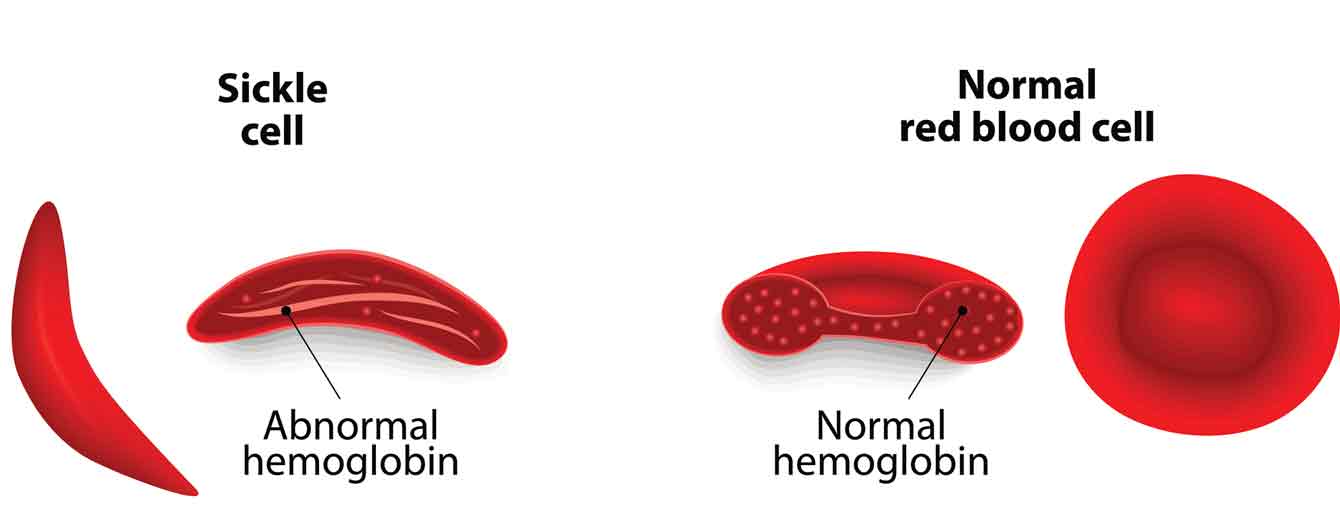
Symptoms of iron deficiency anaemia
Many people with iron deficiency anaemia only have a few symptoms. The severity of the symptoms largely depends on how quickly anaemia develops.
You may notice symptoms immediately, or they may develop gradually if your anaemia is caused by a long-term problem, such as a stomach ulcer.
The most common symptoms include:
- tiredness and lack of energy (lethargy)
- shortness of breath
- noticeable heartbeats (heart palpitations)
- a pale complexion
Less common symptoms include:
- headache
- hearing sounds that come from inside the body, rather than from an outside source (tinnitus)
- an altered sense of taste
- feeling itchy
- a sore or abnormally smooth tongue
- hair loss
- a desire to eat non-food items, such as ice, paper or clay (pica)
- difficulty swallowing (dysphagia)
- painful open sores (ulcers) on the corners of your mouth
- spoon-shaped nails
When to see your GP
See your GP if you experience symptoms of iron deficiency anaemia.:max_bytes(150000):strip_icc()/mean-corpuscular-volume-overview-4583160_final-45afc0d3f6624be1b9b9a03741fa8051.jpg) They should be able to diagnose the condition using a simple blood test.
They should be able to diagnose the condition using a simple blood test.
Read more about diagnosing iron deficiency anaemia
What causes iron deficiency anaemia?
There are many things that can lead to a lack of iron in the body. In men and post-menopausal women, the most common cause is bleeding in the stomach and intestines.
This can be caused by a stomach ulcer, stomach cancer, bowel cancer, or by taking non-steroidal anti-inflammatory drugs (NSAIDs).
In women of reproductive age, heavy periods and pregnancy are the most common causes of iron deficiency anaemia as your body needs extra iron for your baby during pregnancy.
Unless you’re pregnant, it’s rare for iron deficiency anaemia to be caused just by a lack of iron in your diet. However, if you do lack dietary iron, it may mean you’re more likely to develop anaemia than if you have one of the problems mentioned above.
Read more about the causes of iron deficiency anaemia
How iron deficiency anaemia is treated
Treatment for iron deficiency anaemia involves taking iron supplements to boost the low levels of iron in your body.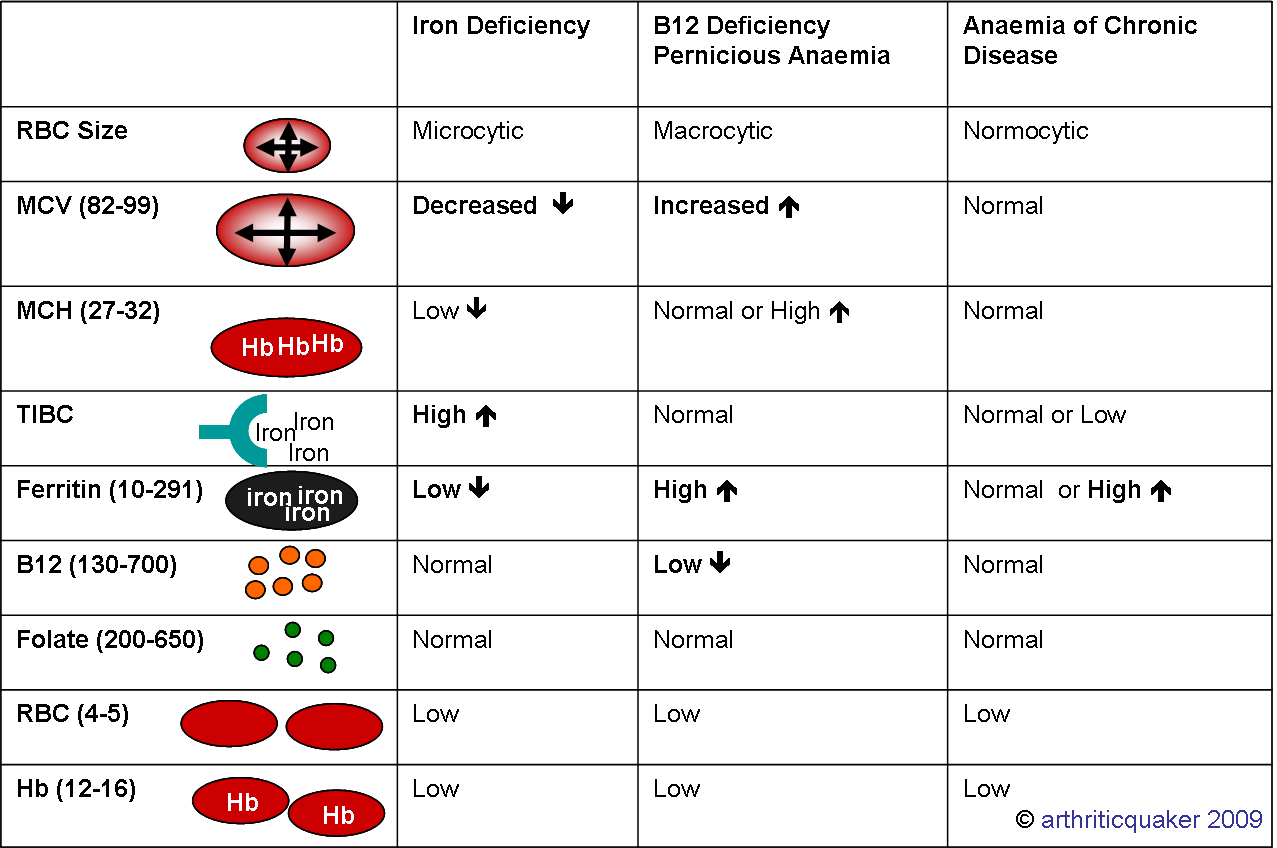 This is usually effective, and the condition rarely causes long-term problems.
This is usually effective, and the condition rarely causes long-term problems.
You’ll need to be monitored every few months to check the treatment is working and your iron levels have returned to normal.
The underlying cause will need to be treated so you don’t get anaemia again. Increasing the amount of iron in your diet may also be recommended.
Good sources of iron include:
- dark-green leafy vegetables, such as watercress and curly kale
- iron-fortified cereals or bread
- brown rice
- pulses and beans
- nuts and seeds
- meat, fish and tofu
- eggs
- dried fruit, such as dried apricots, prunes and raisins
Read more about treating iron deficiency anaemia
Further problems
If iron deficiency anaemia is left untreated, it can make you more susceptible to illness and infection, as a lack of iron affects the body’s natural defence system (the immune system).
Severe iron deficiency anaemia may increase your risk of developing complications that affect the heart or lungs, such as an abnormally fast heartbeat (tachycardia) or heart failure, where your heart is unable to pump enough blood around your body at the right pressure.
Pregnant women with severe or untreated anaemia also have a higher risk of complications before and after birth.
Read more about the complications of iron deficiency anaemia
Causes of iron deficiency anaemia
Iron deficiency anaemia occurs when the body doesn’t have enough iron, leading to the decreased production of red blood cells. Red blood cells carry oxygen around the body.
A lack of iron can be caused by several factors. Some of the most common causes of iron deficiency anaemia are outlined below.
Monthly periods
In women of reproductive age, periods are the most common cause of iron deficiency anaemia.
Usually, only women with heavy periods develop iron deficiency anaemia. If you have heavy bleeding over several consecutive menstrual cycles, it’s known as menorrhagia.
Pregnancy
It’s also very common for women to develop iron deficiency during pregnancy.
This is because your body needs extra iron to ensure your baby has a sufficient blood supply and receives necessary oxygen and nutrients.
Some pregnant women require an iron supplement, while others may need to increase the amount of iron in their diet.
Read more about vitamins and minerals in pregnancy
Gastrointestinal blood loss
The gastrointestinal tract is the part of the body responsible for digesting food. It contains the stomach and intestines.
Bleeding in the gastrointestinal tract is the most common cause of iron deficiency anaemia in men, as well as women who’ve experienced the menopause (when monthly periods stop).
Most people with gastrointestinal bleeding don’t notice any obvious blood in their stools and don’t experience any changes in their bowel habits.
Some causes of gastrointestinal bleeding are described below.
Non-steroidal anti-inflammatory drugs
Non-steroidal anti-inflammatory drugs (NSAIDs) can cause bleeding in the stomach. Ibuprofen and aspirin are two commonly prescribed NSAIDs.
If your GP thinks your medication is causing gastrointestinal bleeding, they can prescribe a less harmful medicine. However, don’t stop taking a medicine you’ve been prescribed unless your GP advises you to.
However, don’t stop taking a medicine you’ve been prescribed unless your GP advises you to.
Stomach ulcers
The acid in your stomach, which helps your body digest food, can sometimes eat into your stomach lining. When this happens, the acid forms an open sore (an ulcer). This is also known as a stomach ulcer or a peptic ulcer.
Stomach ulcers can cause the stomach lining to bleed, which can lead to anaemia. In some cases, the bleeding can cause you to vomit blood or pass blood in your stools. However, if the ulcer bleeds slowly, you may not have any symptoms.
Gastrointestinal cancer
In a few cases, gastrointestinal bleeding can be caused by cancer, usually stomach cancer or bowel cancer.
When trying to establish the cause of anaemia, your GP will check for possible signs of cancer.
If your GP suspects cancer, you’ll be referred to a gastroenterologist (a specialist in treating digestive conditions) for a more thorough examination. This means that if cancer is found, it can be treated as quickly as possible.
If you’re 60 years old or over and have iron deficiency anaemia, your GP should refer you to a specialist to rule out bowel cancer. Your appointment with the specialist should be within two weeks of your GP referring you.
Angiodysplasia
Gastrointestinal bleeding can also be caused by a condition called angiodysplasia. This is the result of abnormal, fragile superficial blood vessels in the gastrointestinal tract, which can cause bleeding.
Chronic kidney disease
People with chronic kidney disease (CKD) often develop iron deficiency anaemia.
Most people with CKD who have iron deficiency anaemia will be given iron supplement injections, although daily tablets may be tried first.
You can read more about treating anaemia in people with CKD on the National Institute for Health and Care Excellence (NICE) website.
Other causes
Other conditions or actions that cause blood loss and may lead to iron deficiency anaemia include:
- inflammatory bowel disease – a condition that causes redness and swelling (inflammation) in the digestive system, such as Crohn’s disease and ulcerative colitis
- oesophagitis – inflammation of the gullet (oesophagus) caused by stomach acid leaking through it
- schistosomiasis – an infection caused by parasites, mainly found in sub-Saharan Africa
- blood donation – donating a large amount of blood may lead to anaemia
- trauma – a serious accident, such as a car crash, may cause you to lose a large amount of blood
- nosebleeds – having regular nosebleeds may lead to anaemia, although this is rare
- haematuria (blood in your urine) – but this rarely causes anaemia and may be a symptom of another condition
Malabsorption
Malabsorption is when your body can’t absorb iron from food, and is another possible cause of iron deficiency anaemia.
This may happen if you have coeliac disease, a common digestive condition where a person has an adverse reaction to gluten, or surgery to remove all or part of your stomach (gastrectomy).
Lack of iron in your diet
Unless you’re pregnant, it’s rare for iron deficiency anaemia to be caused solely by a lack of iron in your diet.
However, a lack of dietary iron can increase your risk of developing anaemia if you also have any of the conditions mentioned above.
Some studies suggest vegetarians or vegans are more at risk of iron deficiency anaemia because of the lack of meat in their diet.
If you are vegetarian or vegan, it is possible to gain enough iron by eating other types of food, such as:
- beans
- nuts
- dried fruit, such as dried apricots
- wholegrains, such as brown rice
- fortified breakfast cereals
- soybean flour
- most dark-green leafy vegetables, such as watercress and curly kale
If you’re pregnant, you may need to increase the amount of iron-rich food you consume during pregnancy to help prevent iron deficiency anaemia.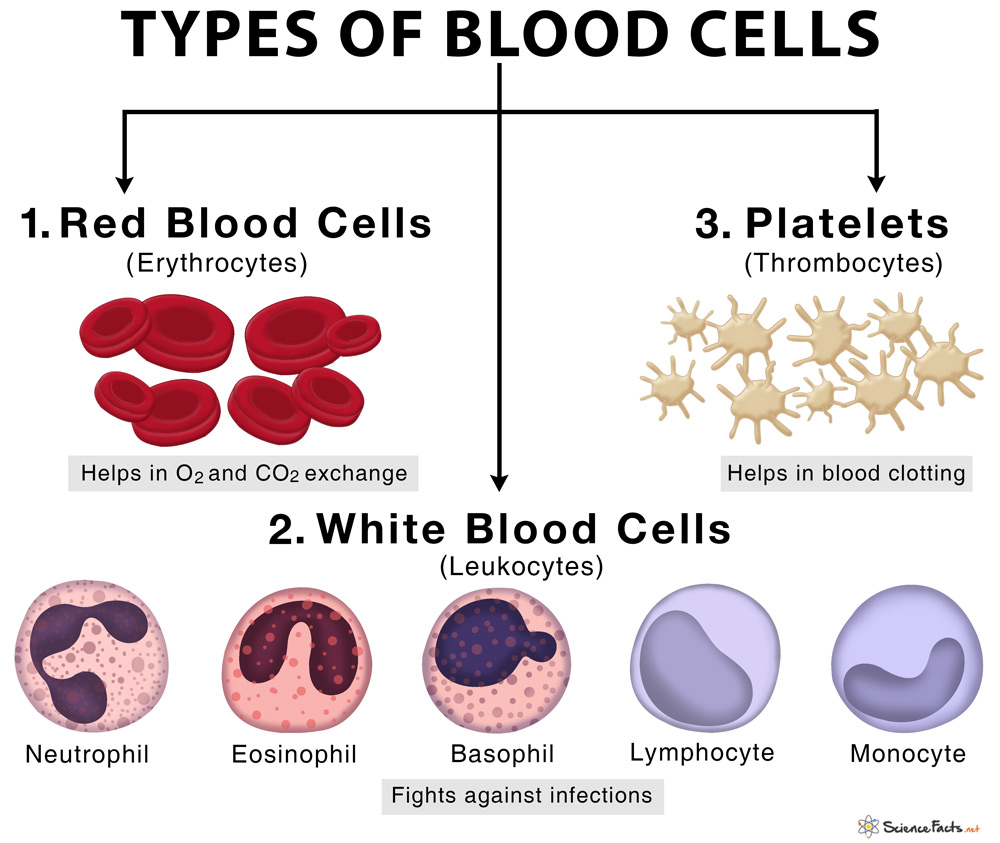
Read more about vegetarian and vegan diets
Diagnosing iron deficiency anaemia
See your GP if you experience symptoms of iron deficiency anaemia, such as tiredness, shortness of breath and heart palpitations.
A simple blood test can usually confirm the diagnosis.
Your GP may also carry out a physical examination and ask you a number of questions to help determine the cause of your anaemia.
Blood test
To diagnose iron deficiency anaemia, a blood sample is taken from a vein in your arm and a full blood count is made. This means all the different types of blood cells in the sample will be measured.
If you have anaemia:
- your levels of haemoglobin – a substance that transports oxygen – will be lower than normal
- you’ll have fewer red blood cells, which contain haemoglobin, than normal
- your red blood cells may be smaller and paler than usual
Your GP may also test for a substance called ferritin, a protein that stores iron. If your ferritin levels are low, it means there isn’t much iron stored in your body and you may have iron deficiency anaemia.
If your ferritin levels are low, it means there isn’t much iron stored in your body and you may have iron deficiency anaemia.
Read more about blood tests
Vitamin B12 and folate deficiency
If your GP thinks your anaemia may be the result of a vitamin B12 and folate deficiency, the levels of these substances may be tested. Folate works with vitamin B12 to help your body produce red blood cells.
Vitamin B12 and folate deficiency anaemia is more common in people who are over the age of 75.
Finding the cause
To determine the underlying cause of your anaemia, your GP may ask questions about your lifestyle and medical history. For example, they may ask you about:
- your diet – to see what you typically eat and whether this includes any iron-rich foods
- any medicines you take – to see if you’ve been regularly taking a type of medicine that can cause bleeding from the stomach and intestines (gastrointestinal bleeding), such as ibuprofen or aspirin
- your menstrual pattern – if you’re a woman, your GP may ask if you’ve been experiencing particularly heavy periods
- your family history – you’ll be asked if your immediate family has anaemia or a history of gastrointestinal bleeding or blood disorders
Iron deficiency anaemia is common during pregnancy.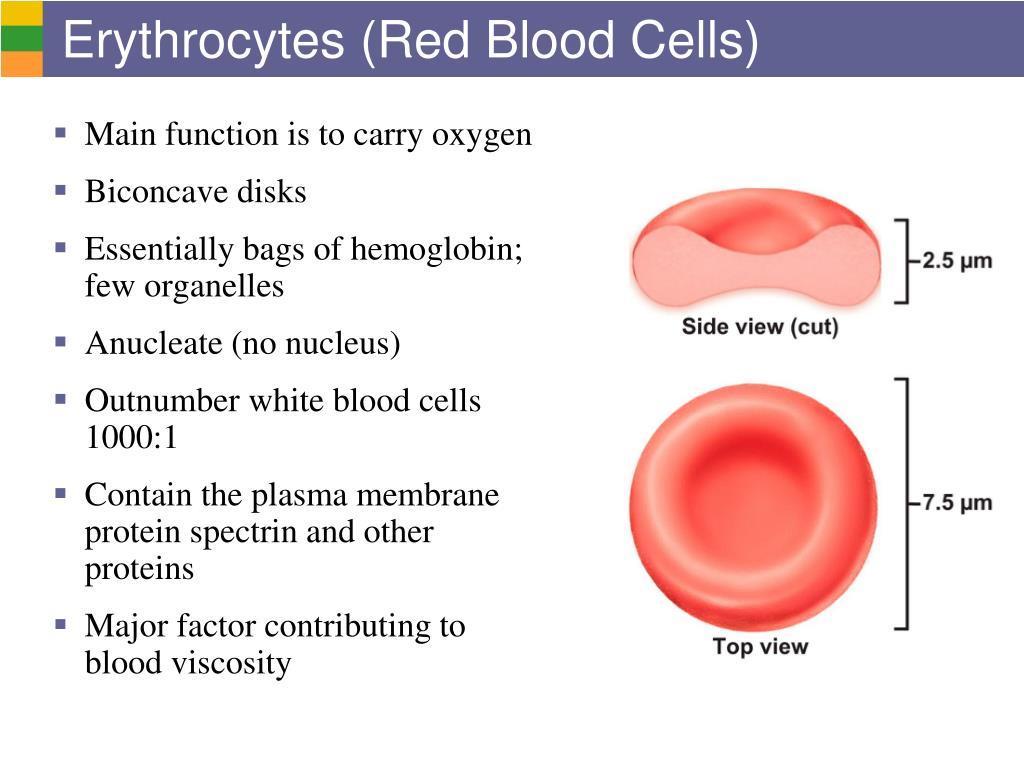 If you’re pregnant, your GP will usually only look for an alternative cause if a blood test has identified a particularly low haemoglobin level, or if your symptoms or medical history suggest your anaemia may be caused by something else.
If you’re pregnant, your GP will usually only look for an alternative cause if a blood test has identified a particularly low haemoglobin level, or if your symptoms or medical history suggest your anaemia may be caused by something else.
Physical examination
A physical examination will usually only be needed if the cause of your iron anaemia deficiency hasn’t been identified by examining your medical history and asking you about your symptoms.
In such cases, your GP may:
- examine your stomach (abdomen) to check for any physical signs of gastrointestinal bleeding
- look for signs of heart failure, such as swollen ankles – heart failure can have some similar symptoms to iron deficiency anaemia
Two other possible types of physical examination you may have are explained below.
Rectal examination
A rectal examination is usually only needed if you’re bleeding from your bottom. It’s a common procedure that can help your GP find out if there’s something in your gastrointestinal tract that’s causing bleeding.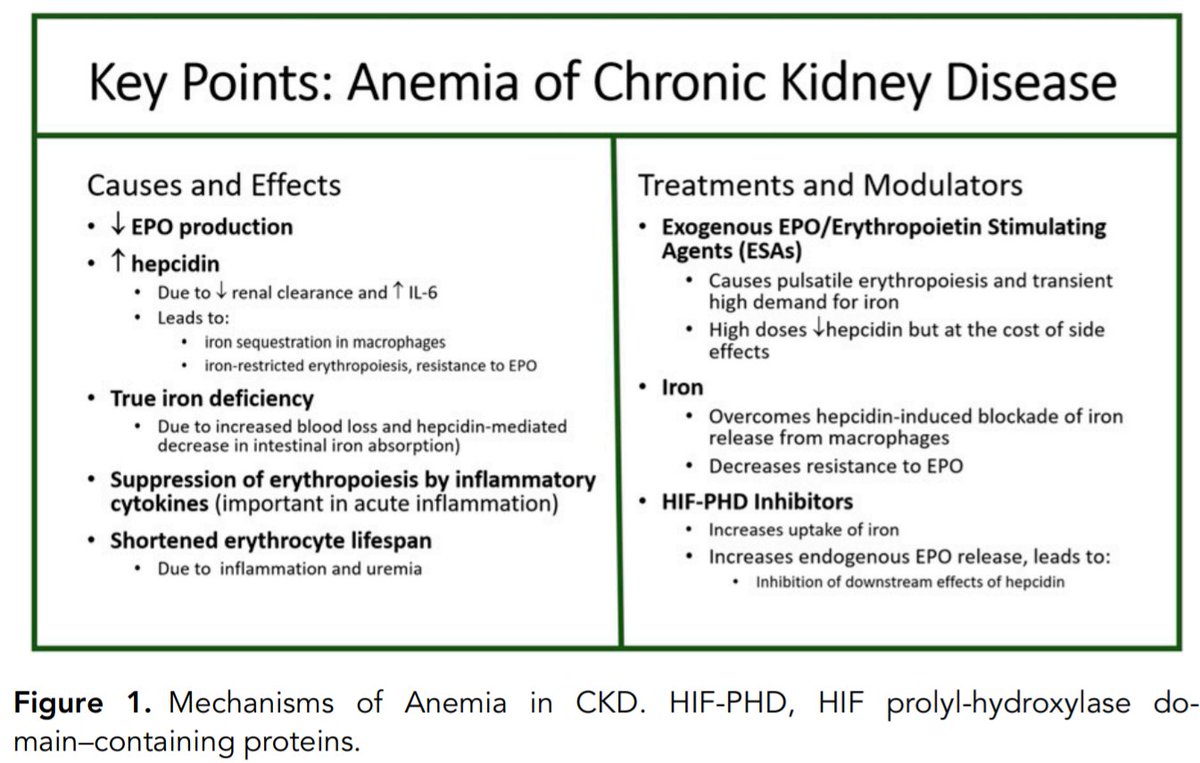
Your GP will insert a lubricated gloved finger into your bottom to feel for any abnormalities.
A rectal examination isn’t something to be embarrassed about, as it’s a procedure your GP will be used to doing. It shouldn’t cause significant pain, but it may cause some slight discomfort – this will only last for a minute.
Pelvic examination
Women may have a pelvic examination if their GP thinks heavy menstrual bleeding (menorrhagia) may be the cause of their anaemia.
During a pelvic examination, your GP will examine your vulva and labia (external sex organs) for signs of bleeding or infection.
They may also examine you internally. This will involve your GP inserting lubricated gloved fingers into your vagina to feel whether your womb (uterus) is tender or enlarged.
A pelvic examination won’t be carried out without your consent (permission), and you can choose to have someone with you.
Referral to a specialist
In some cases, your GP may refer you to a gastroenterologist, a specialist in treating digestive conditions.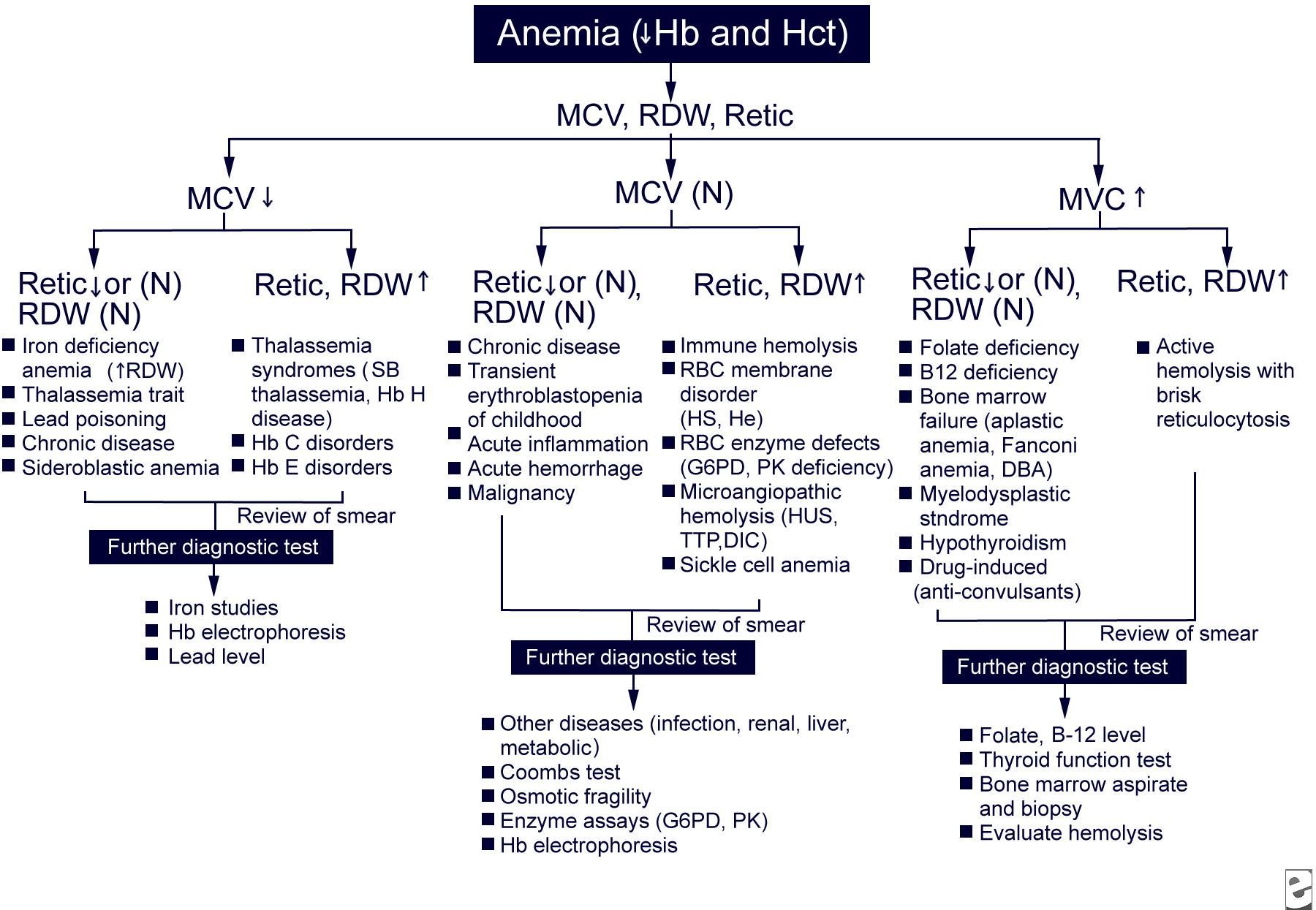 They’ll carry out a more thorough examination.
They’ll carry out a more thorough examination.
For example, you may be referred to a gastroenterologist if your GP can’t identify a cause and you have a particularly low haemoglobin level, or if your GP thinks there’s a possibility your symptoms could be caused by stomach cancer or bowel cancer, although this is unlikely.
If you’re a woman with heavy periods, you may be referred to a gynaecologist if you don’t respond to treatment with iron supplements.
Treating iron deficiency anaemia
Treatment for iron deficiency anaemia usually involves taking iron supplements and changing your diet to increase your iron levels, as well as treating the underlying cause.
Iron supplements
Your GP will prescribe an iron supplement to restore the iron missing from your body. The most commonly prescribed supplement is ferrous sulphate, which is taken as a tablet, usually twice a day.
Some people can experience side effects when taking iron supplements, including:
- abdominal (tummy) pain
- constipation or diarrhoea
- heartburn
- feeling sick
- black stools (faeces)
These side effects should settle down over time.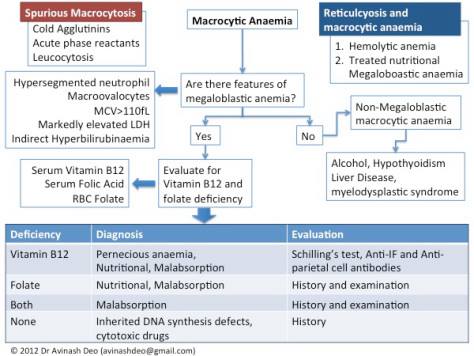 However, your GP may recommend taking the tablets with food or shortly after eating if you have troublesome side effects.
However, your GP may recommend taking the tablets with food or shortly after eating if you have troublesome side effects.
Your GP may also advise you to only take one or two tablets a day, instead of three, if you’re finding side effects difficult to cope with.
If you can’t take ferrous sulphate because you get severe side effects, you may be prescribed a different iron supplement called ferrous gluconate.
This supplement should cause fewer side effects because it contains a less concentrated dose of iron. However, it may take longer for the iron levels in your body to be restored.
In a few cases – for example, if you have chronic kidney disease (CKD) – iron injections may be recommended instead of tablets.
As with all medications, it’s important to store iron supplements out of the reach of children. An overdose of iron supplements in a young child can be fatal.
Dietary advice
If a lack of iron in your diet is thought to be contributing to your iron deficiency anaemia, your GP will tell you how to up your intake.
Iron-rich foods include:
- dark-green leafy vegetables, such as watercress and curly kale
- iron-fortified cereals or bread
- brown rice
- pulses and beans
- nuts and seeds
- white and red meat
- fish
- tofu
- eggs
- dried fruit, such as dried apricots, prunes and raisins
Your diet should include foods from all the major food groups to ensure it’s healthy and balanced. In particular, food and drink containing vitamin C are important as vitamin C helps your body absorb iron.
However, consuming large amounts of some foods and drinks, as well as certain medicines, may make it harder for your body to absorb iron. These include:
- tea and coffee
- calcium – found in dairy products, such as milk
- antacids and proton pump inhibitors (PPIs) – medications used to relieve indigestion
- wholegrain cereals – although wholegrains are a good source of iron themselves, they contain phytic acid, which can stop your body absorbing iron from other foods and pills
You may be referred to a nutrition specialist called a dietitian if you’re finding it difficult to include iron in your diet.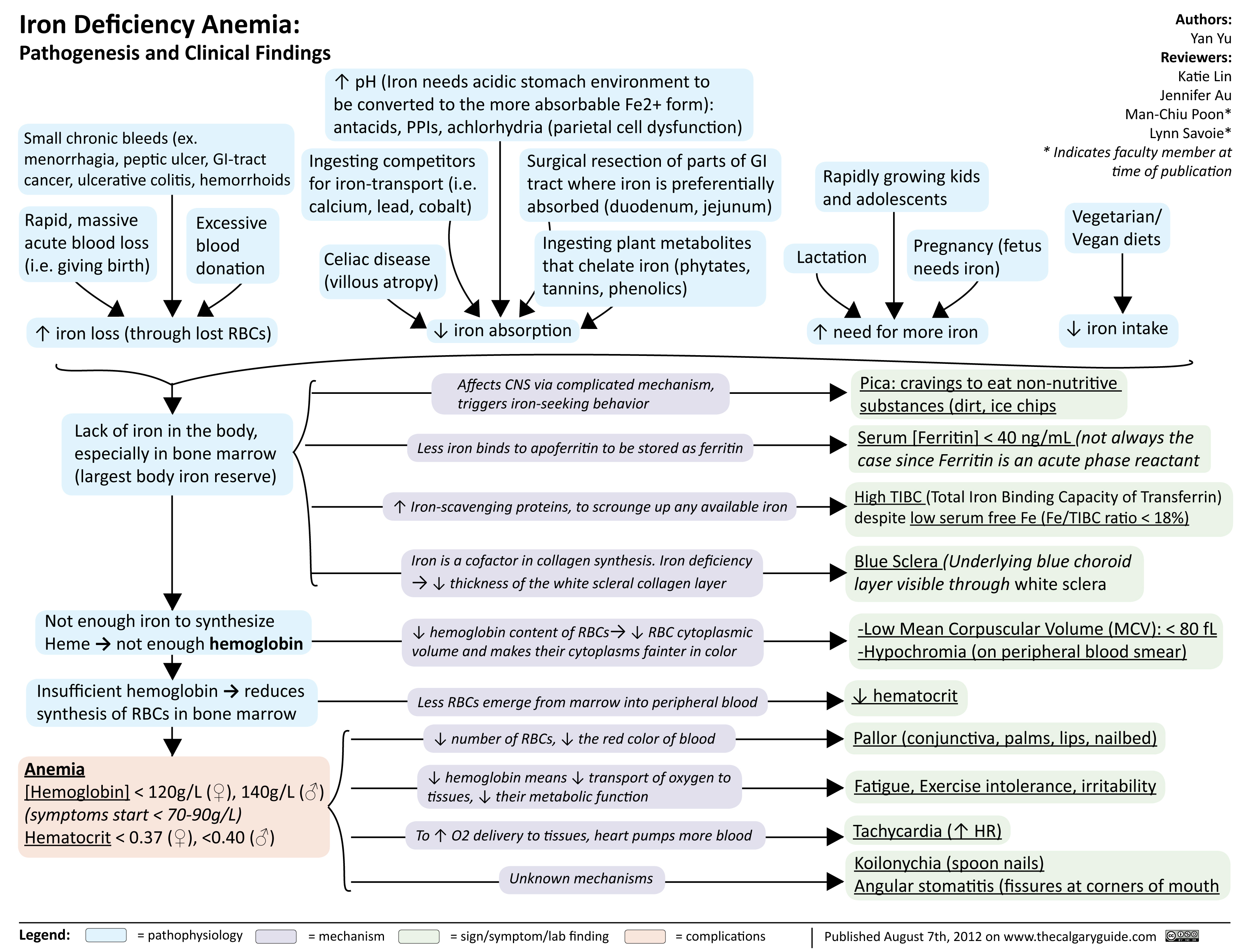 They’ll be able to give you detailed, personalised advice about how you can improve your diet.
They’ll be able to give you detailed, personalised advice about how you can improve your diet.
Treating the underlying cause
Your GP will also need to ensure the underlying cause of your anaemia is treated so it doesn’t happen again.
For example, if non-steroidal anti-inflammatory drugs (NSAIDs) are causing bleeding in your stomach, your GP may prescribe a different medicine to help minimise the risk of stomach bleeding.
Heavy periods can be treated with medication or – in particularly severe cases – surgery.
Monitoring
Your GP will ask you to return two to four weeks after you’ve started taking iron supplements to check how well you’ve responded to the treatment. You’ll have a blood test to check your haemoglobin levels.
If your blood test results show an improvement, you’ll be asked to continue taking iron supplements and return in two to four months for another blood test.
Once your haemoglobin levels and red blood cells are normal, your GP will usually recommend continuing to take iron supplements for three months to help build up the iron levels in your body.
After this, you should be able to stop taking the supplements, depending on the cause of your iron deficiency anaemia. Your condition will be monitored every three months over the course of a year, and again a year later.
Continuing treatment
Sometimes after a person’s iron levels have been replenished, they start to fall again.
This could happen if you don’t get enough iron in your diet, you’re pregnant, or you have consistently heavy periods.
In such cases, you may be prescribed an ongoing iron supplement to help stop your anaemia returning. This will usually be a tablet, which you’ll have to take once a day.
If treatment is ineffective
If your iron levels don’t improve, your GP will ask how regularly you’ve been taking your iron supplements.
Some people are put off taking the medication because of the side effects. However, your condition won’t improve if you don’t take the supplements.
If you’ve been taking the supplements as prescribed and your iron levels still haven’t improved, your GP may refer you to a specialist for an assessment.
Complications of iron deficiency anaemia
Iron deficiency anaemia rarely causes serious or long-term complications, although some people with the condition find it affects their daily life.
Some common complications are outlined below.
Tiredness
Iron deficiency anaemia can make you feel tired and lacking in energy (lethargic). This may result in you being less productive at work, and you may find it difficult to stay awake or not feel able to exercise regularly.
Increased risk of infections
Research has shown iron deficiency anaemia can affect your immune system – the body’s natural defence system. This increases your vulnerability to infection.
Heart and lung problems
Adults with severe anaemia may be at risk of developing complications that affect their heart or lungs.
For example, you may develop tachycardia, which is an abnormally fast heartbeat, or heart failure, where the heart fails to pump enough blood around your body at the right pressure.
Pregnancy complications
Pregnant women with severe anaemia have an increased risk of developing complications, particularly during and after birth.
They may also develop postnatal depression, which some women experience after having a baby.
Research suggests babies born to mothers who have untreated anaemia are more likely to:
- be born prematurely – before the 37th week of pregnancy
- have a low birth weight
- have problems with iron levels themselves
- do less well in mental ability tests
Restless legs syndrome
Some cases of restless legs syndrome are thought to be caused by iron deficiency anaemia. Doctors often refer to this as secondary restless legs syndrome.
Restless legs syndrome is a common condition that affects the nervous system, and causes an overwhelming, irresistible urge to move the legs. It also causes an unpleasant feeling in the feet, calves and thighs.
Restless legs syndrome caused by iron deficiency anaemia can usually be treated with iron supplements.
Anemia
Anemia is a condition in which the amount of red blood cells and / or hemoglobin in them is reduced in the blood. This deficiency affects the function of transporting oxygen.
Analyzes
Type A gastritis and pernicious anemia (APC and AVF)
5-6 days (except Saturday, Sunday)
from 1 795 ₽
Add to cart
90 002
This is one of the main results of blood circulation – it delivers O2 molecules to the tissues through the arteries and, thanks to the venous outflow, removes waste materials, including carbon dioxide. The main gas exchange occurs in the alveoli – the final formations of the bronchial tree. This is the part of the respiratory system where the blood releases some gases and takes in others. The insufficiency of this process leads to hypoxia – a reduced supply of oxygen to the tissues. This affects all processes in the body, the state of tissues and the cellular mechanism. Without the presence of oxygen, chemical reactions do not take place and energy exchange does not occur.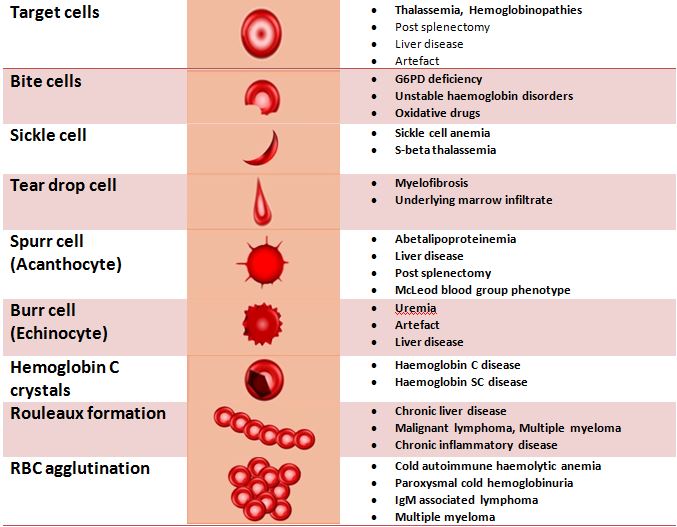
Outwardly, this is manifested by various clinical signs:
- pallor;
- weakness;
- increased heart rate and breathing – the body tries to compensate for the lack of oxygen;
- the possibility of loss of consciousness;
- decrease in working capacity;
- flashing “flies” before the eyes;
- dizziness;
- noise in ears;
- irritability;
- dyspnea.
These signs are the reason to go to a medical center for testing. Anemia is often a manifestation of pathology, since in itself, most often, it is a symptom. A full examination will show the cause of the condition and allow effective treatment to begin.
Anemia classification
There are several types of anemia, depending on the origin and pathogenesis of development. Understanding the nature of anemia will allow you to determine the tactics of treatment, since different types of this pathology have a different source of origin. Even a general blood test for different anemias is somewhat different – for this it is necessary to take into account not only the number of erythrocytes and hemoglobin, but also the color index, the size of erythrocytes, hematocrit and other research parameters. In some cases, a more detailed examination of the patient, clinical diagnosis, is required in order to say exactly what caused the disease.
Even a general blood test for different anemias is somewhat different – for this it is necessary to take into account not only the number of erythrocytes and hemoglobin, but also the color index, the size of erythrocytes, hematocrit and other research parameters. In some cases, a more detailed examination of the patient, clinical diagnosis, is required in order to say exactly what caused the disease.
Let us consider in more detail the types of anemia and the causes of their occurrence.
Iron deficiency anemia is quite common, as many people around the world are iron deficient. The development of anemia depends on the degree of this insufficiency. A lack of glands can occur when there is a lack of it in food, with an increased consumption of iron by the body, as well as with some features of the digestive tract, when iron is not fully absorbed. It is the reduced amount of iron that leads to the development of 70% of all anemias, so that all other causes account for only 30% of this pathology.
 The basis of pathogenesis is a violation of the formation of hemoglobin, in which the iron molecule plays the main role. A reduced amount of protein that carries the blood affects the state of the body. Lack of oxygen has common signs of anemia, but with iron deficiency there are still some specific symptoms – hair loss, problems with nails, worsening of the heart, digestive tract. Sometimes there are distorted taste preferences – the desire to eat chalk or paint. This is all due to iron deficiency. The disease is more often observed in children, women during pregnancy, elderly patients. Laboratory diagnosis of iron deficiency involves an analysis of blood proteins that carry iron, the ability of blood serum to bind the trace element and other indicators that complement the usual diagnostic program for anemia.
The basis of pathogenesis is a violation of the formation of hemoglobin, in which the iron molecule plays the main role. A reduced amount of protein that carries the blood affects the state of the body. Lack of oxygen has common signs of anemia, but with iron deficiency there are still some specific symptoms – hair loss, problems with nails, worsening of the heart, digestive tract. Sometimes there are distorted taste preferences – the desire to eat chalk or paint. This is all due to iron deficiency. The disease is more often observed in children, women during pregnancy, elderly patients. Laboratory diagnosis of iron deficiency involves an analysis of blood proteins that carry iron, the ability of blood serum to bind the trace element and other indicators that complement the usual diagnostic program for anemia.B12 deficiency anemia occurs when there is a deficiency in the body of the corresponding vitamin, which is contained in animal products, in particular meat.
 This explains the fact that the disease often occurs in those who have refused to use such products. This vitamin is the main participant in the formation of new blood cells – erythrocytes. The cause of the pathology may lie in endogenous factors – for example, with a deficiency of the Castle factor. It is a protein that is produced by the cells of the gastric mucosa and promotes the body’s intake of the vitamin from food. Anemia can occur after surgery, during which part of the intestine or stomach is removed. It could also be a vitamin deficiency. As a rule, a certain supply of a substance in the body is designed for several years, which explains the fact that the development of anemia occurs gradually even after a change in eating habits. The cause may be an inflammatory process in the tissues of the gastrointestinal tract, taking certain medications, a violation of the transport of the vitamin from the blood into the intracellular space, as well as an increased consumption of the vitamin by the body.
This explains the fact that the disease often occurs in those who have refused to use such products. This vitamin is the main participant in the formation of new blood cells – erythrocytes. The cause of the pathology may lie in endogenous factors – for example, with a deficiency of the Castle factor. It is a protein that is produced by the cells of the gastric mucosa and promotes the body’s intake of the vitamin from food. Anemia can occur after surgery, during which part of the intestine or stomach is removed. It could also be a vitamin deficiency. As a rule, a certain supply of a substance in the body is designed for several years, which explains the fact that the development of anemia occurs gradually even after a change in eating habits. The cause may be an inflammatory process in the tissues of the gastrointestinal tract, taking certain medications, a violation of the transport of the vitamin from the blood into the intracellular space, as well as an increased consumption of the vitamin by the body. In addition to the general symptoms of anemia, vitamin B12 deficiency causes ulcers on the oral mucosa, a violation of innervation, which is manifested by a deterioration in sensitivity, tingling and numbness, impaired memory and thinking. Additional tests involve an assessment of the amount of vitamin in the body, the study of pathologies that lead to its deficiency. The treatment will also be specific – it consists in the additional use of vitamin preparations, the normalization of the state of the digestive organs. Vitamin B12 is involved not only in the formation of red blood cells – its functions in the body are diverse, which is reflected in multiple complications of anemia, if the condition is not corrected.
In addition to the general symptoms of anemia, vitamin B12 deficiency causes ulcers on the oral mucosa, a violation of innervation, which is manifested by a deterioration in sensitivity, tingling and numbness, impaired memory and thinking. Additional tests involve an assessment of the amount of vitamin in the body, the study of pathologies that lead to its deficiency. The treatment will also be specific – it consists in the additional use of vitamin preparations, the normalization of the state of the digestive organs. Vitamin B12 is involved not only in the formation of red blood cells – its functions in the body are diverse, which is reflected in multiple complications of anemia, if the condition is not corrected.Folate deficiency anemia develops as a result of a deficiency of folic acid, a vitamin that, like B12, is involved in the formation of new red blood cells. Folic acid is also called vitamin B9. The lack of this substance in the body occurs with a reduced consumption of foods that contain it, sometimes this occurs against the background of alcohol abuse.
 Violation of vitamin absorption is observed in the pathology of digestion, during frequent urination, against the background of taking drugs that slow down the metabolism of vitamin B9. An increased consumption of folic acid accompanies oncological diseases, hematopoietic disorders, and infectious pathology. Symptoms of hypoxia in this type of anemia are supplemented by stool disorders, numbness in the muscles of the arms and legs, weakness of muscle tissue, distortion of taste perception, and emotional lability. Laboratory diagnosis of folate deficiency anemia includes such specific methods as the study of the level of the substance, as well as vitamin B12. In addition to laboratory tests, it is necessary to clarify the cause of the development of such a condition, for which instrumental studies are carried out. Establishing the cause will make the treatment more effective and speed up its result. Complications of anemia include a lack of other blood elements, the occurrence of many ulcerative necrotic processes, nausea and vomiting, and a decrease in the body’s immune defenses.
Violation of vitamin absorption is observed in the pathology of digestion, during frequent urination, against the background of taking drugs that slow down the metabolism of vitamin B9. An increased consumption of folic acid accompanies oncological diseases, hematopoietic disorders, and infectious pathology. Symptoms of hypoxia in this type of anemia are supplemented by stool disorders, numbness in the muscles of the arms and legs, weakness of muscle tissue, distortion of taste perception, and emotional lability. Laboratory diagnosis of folate deficiency anemia includes such specific methods as the study of the level of the substance, as well as vitamin B12. In addition to laboratory tests, it is necessary to clarify the cause of the development of such a condition, for which instrumental studies are carried out. Establishing the cause will make the treatment more effective and speed up its result. Complications of anemia include a lack of other blood elements, the occurrence of many ulcerative necrotic processes, nausea and vomiting, and a decrease in the body’s immune defenses.
Post-hemorrhagic anemia , if translated literally, means that the condition has developed after bleeding and associated blood loss. Violation of the integrity of blood vessels is the cause of internal and external bleeding. Depending on the intensity of the process and the rate of blood loss, anemia develops – a lack of red blood cells and, accordingly, a lack of oxygen transport. This can be determined by clinical signs – after blood loss, a person becomes pale, feels weak and has tinnitus. Of course, it is easier to determine blood loss when it is clearly accompanied by visible blood leakage. But, in some cases, the process is not so obvious. We are talking about internal bleeding, which can occur in the digestive organs, urogenital area, respiratory organs. It is not so fast to determine them; this requires diagnostic methods, including instrumental and laboratory ones. If blood loss passes in a short time, it is more dangerous for the body, vital functions are disturbed.
 Posthemorrhagic anemia occurs either after the loss of a significant volume of circulating blood, or with permanent damage to the blood vessels, which most often occurs in the internal organs. Significant surgical intervention, pathological menstruation, trauma, and pathology of the digestive tract can be the cause. In this case, it is possible to determine the mechanism of anemia by characteristic features in the general blood test, as well as due to a detailed examination of the body.
Posthemorrhagic anemia occurs either after the loss of a significant volume of circulating blood, or with permanent damage to the blood vessels, which most often occurs in the internal organs. Significant surgical intervention, pathological menstruation, trauma, and pathology of the digestive tract can be the cause. In this case, it is possible to determine the mechanism of anemia by characteristic features in the general blood test, as well as due to a detailed examination of the body.Megaloblastic anemia combines pathologies associated with deficiency of folic acid and vitamin B12. In a blood test, this is displayed by an increase in the color index – this does not happen with other types of anemia. The concentration of hemoglobin in each erythrocyte increases, megaloblasts appear in the bone marrow, and the size of erythrocytes increases. In the blood serum, an increase in the concentration of iron can be observed.
Hemolysis – the process of destruction of red blood cells, resulting in a corresponding, hemolytic anemia.
 The destruction of red blood cells leads to the formation of bilirubin, an extremely toxic substance that can lead to intoxication of the body. Such anemia is congenital and acquired. Congenital tendency to hemolysis accompanies intrauterine development mutations, genetic pathologies. Acquired pathology occurs against the background of an infectious process, disruption of the liver, taking certain medications, transfusion of incompatible blood. Recognize hemolytic anemia at the clinical stage is possible by the following signs: icteric color of the skin, convulsions, fever, an increase in the size of the liver and spleen. Diagnosis includes laboratory and instrumental methods that will confirm the specificity of anemia and indicate its cause. Depending on the cause of hemolysis, treatment tactics are selected, therefore it is so important to establish what led to this condition.
The destruction of red blood cells leads to the formation of bilirubin, an extremely toxic substance that can lead to intoxication of the body. Such anemia is congenital and acquired. Congenital tendency to hemolysis accompanies intrauterine development mutations, genetic pathologies. Acquired pathology occurs against the background of an infectious process, disruption of the liver, taking certain medications, transfusion of incompatible blood. Recognize hemolytic anemia at the clinical stage is possible by the following signs: icteric color of the skin, convulsions, fever, an increase in the size of the liver and spleen. Diagnosis includes laboratory and instrumental methods that will confirm the specificity of anemia and indicate its cause. Depending on the cause of hemolysis, treatment tactics are selected, therefore it is so important to establish what led to this condition.Hypoplastic anemia – a disease in which the synthesis of all blood cells is impaired.
 Sometimes only a deficiency of red blood cells can occur. In any case, hypoxia is observed, a violation of oxygen transport in the tissues. This type of anemia can also be congenital or acquired. Among the causes are genetic mutations, exposure to radiation, chemotherapy, poisoning with certain substances, drugs. Clinical manifestations of hypoplastic anemia occur gradually and very slowly. In addition to the usual symptoms of anemia, one can distinguish a decrease in immunity, the occurrence of multiple inflammatory, purulent, necrotic processes, slow wound healing, and frequent colds. There may be hemorrhages with minor damage to the vessel, bleeding. It is necessary to study the internal organs, lymph nodes, bone marrow. Aplastic anemia has a characteristic clinical picture, specific changes in the analyzes. Treatment is carried out with potent drugs, and sometimes surgical methods are also needed. The main point is the timeliness of the start of treatment – the earlier it is started, the better the recovery rates and prognosis.
Sometimes only a deficiency of red blood cells can occur. In any case, hypoxia is observed, a violation of oxygen transport in the tissues. This type of anemia can also be congenital or acquired. Among the causes are genetic mutations, exposure to radiation, chemotherapy, poisoning with certain substances, drugs. Clinical manifestations of hypoplastic anemia occur gradually and very slowly. In addition to the usual symptoms of anemia, one can distinguish a decrease in immunity, the occurrence of multiple inflammatory, purulent, necrotic processes, slow wound healing, and frequent colds. There may be hemorrhages with minor damage to the vessel, bleeding. It is necessary to study the internal organs, lymph nodes, bone marrow. Aplastic anemia has a characteristic clinical picture, specific changes in the analyzes. Treatment is carried out with potent drugs, and sometimes surgical methods are also needed. The main point is the timeliness of the start of treatment – the earlier it is started, the better the recovery rates and prognosis.
Anemia occurs in the chronic course of infectious, oncological and inflammatory pathologies. May be associated with a violation of iron synthesis, a reduction in the life of red blood cells, increased consumption of certain substances, chronic blood loss. It is necessary to determine the type of anemia, which is possible with the help of a laboratory test, and also to establish the cause of its occurrence. The treatment of the underlying disease can be supplemented by replenishing the deficiency of certain substances, which will speed up the healing process and improve the quality of life of the patient. The chronic course of the pathology implies the slow onset of symptoms. This suggests that it is necessary to be attentive to changes in various organs and systems and to seek medical help in a timely manner. If the symptoms are disturbing for a long time, it is necessary to undergo a full and comprehensive diagnosis.
Modern methods for diagnosing anemia
For the diagnosis of anemia, laboratory and instrumental research methods are used. For proper treatment, it is important to determine not only the fact of anemia and its type, but also the cause of this condition. Detection of the disease is best done in the early stages of the process and do this using a variety of diagnostic methods. A complete picture of the state of the body gives a more complete understanding of the pathology. Only after a qualitative examination can an effective treatment be prescribed.
For proper treatment, it is important to determine not only the fact of anemia and its type, but also the cause of this condition. Detection of the disease is best done in the early stages of the process and do this using a variety of diagnostic methods. A complete picture of the state of the body gives a more complete understanding of the pathology. Only after a qualitative examination can an effective treatment be prescribed.
The main method for diagnosing anemia is complete blood count. with it, you can determine the number of red blood cells and hemoglobin, their ratio, color index, hematocrit, red blood cell diameter and other indicators. Sometimes, other indicators of the general blood test – the levels of other blood cells, ESR – can tell about the cause of the pathology. This analysis is given first of all if anemia is suspected. Depending on its results, other diagnostic methods are prescribed.
Biochemical blood test will determine the level of serum iron, proteins that carry it, the amount of vitamins B12 and B9.
 It is biochemical analysis that helps to calculate the level of bilirubin and its fractions. thus, this manipulation is required to clarify the type of anemia. The analysis allows you to evaluate most of the processes in the body, provides comprehensive information about the work of internal organs.
It is biochemical analysis that helps to calculate the level of bilirubin and its fractions. thus, this manipulation is required to clarify the type of anemia. The analysis allows you to evaluate most of the processes in the body, provides comprehensive information about the work of internal organs.Study of free protoporphyrin in erythrocytes determines the ability of erythrocytes to carry oxygen and allows you to determine the causes of anemia. Impaired heme binding is observed in acute intoxications and can be detected using this technique.
Analysis of bone marrow puncture shows the presence of blasts – precursors of blood cells. Diagnosis is used to confirm or rule out aplastic anemia. In addition, levels of other missing cells need to be corrected. The study is combined with other diagnostic methods. Early initiation of treatment improves the prognosis for the patient and is possible only after a qualitative diagnosis.

Study of the acidity of gastric juice (pH-metry) is necessary for the diagnosis of iron deficiency anemia. It is necessary to determine for what reason the absorption of iron in the intestine is disturbed and for this purpose this diagnosis is carried out. Increased production of gastric juice negatively affects other functions of the body, leads to a chronic change in the mucous membrane and causes secondary disorders.
The presence of parasites in the body leads to an increased consumption of most of the nutrients and can cause anemia. Their search is also included in the program for diagnosing anemia. It is the worms that can provoke the development of megaloblastic, iron deficiency anemia. In addition, a parasitic infection negatively affects other organs and systems, leading to chronic impairment of many functions.
Examination of feces for occult blood allows you to determine the blood loss, due to which post-hemorrhagic anemia occurs.
 Also, blood loss is a sign of gastrointestinal pathology, which must be detected and treated. If you delay in finding the cause of anemia, the disease can progress, and the later stage of the process, the more difficult it is to treat.
Also, blood loss is a sign of gastrointestinal pathology, which must be detected and treated. If you delay in finding the cause of anemia, the disease can progress, and the later stage of the process, the more difficult it is to treat.X-ray and endoscopic examination is necessary to identify the source of bleeding that led to anemia. This examination allows you to find a pathology that needs to be corrected not only for the treatment of anemia, but also for the full health of the body.
Reasons to undergo diagnostics at SZTsDM JSC
The laboratory of the center is equipped with the latest diagnostic equipment. Analyzes are performed quickly and efficiently. The staff of medical centers employs highly qualified specialists, which allows us to make diagnostics versatile and effective. The patient can not only establish the fact of anemia, but also undergo an extended body check, as well as treatment.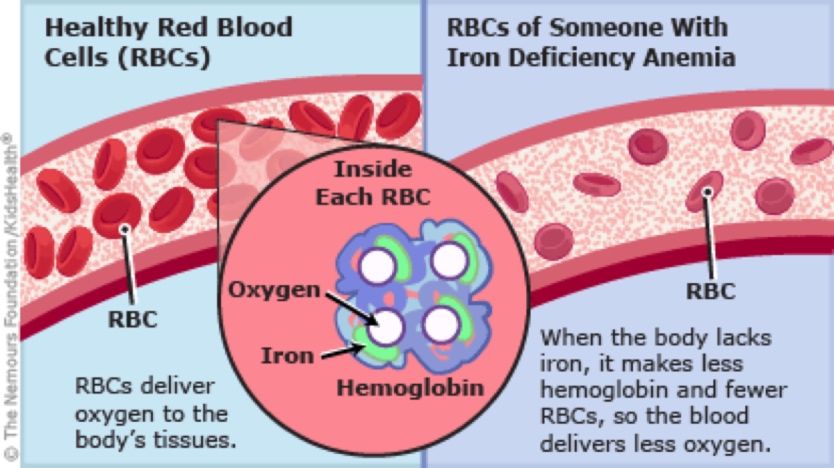 For our doctors, there is no disease of a separate system – they assess the full condition of the patient and treat him, not pathology.
For our doctors, there is no disease of a separate system – they assess the full condition of the patient and treat him, not pathology.
Anemia in children | Children’s City Hospital
What is anemia
Anemia is a decrease in the total concentration of red blood cells and hemoglobin in the blood. The task of red blood cells is to deliver oxygen to the tissues of the body. Therefore, with a decrease in their number, the body suffers from the so-called hypoxia – lack of oxygen. Children are especially sensitive to a decrease in hemoglobin.
According to statistics, anemia occurs in 15% of children. Anemias are very different – some are associated with a lack of B vitamins, others – with a lack of folic acid. But the vast majority of anemia develops due to iron deficiency. These anemias are called iron deficiency, and they are the most common (about 90% of all anemias). Let’s talk about iron deficiency anemia today.
Causes and symptoms of anemia
Causes of iron deficiency anemia are divided into three groups.
The first is the situation of blood loss. This includes bleeding from the gastrointestinal tract, menstrual bleeding, and any other blood loss.
The second group includes the lack of iron. And although this is possible only when fasting, this happens in children. For example, when vegetarian parents intentionally deprive their child of meat food – the main source of heme iron.
The next group of causes is iron malabsorption. With some diseases of the stomach or intestines, after abdominal operations on the gastrointestinal tract. The fact is that iron is absorbed mainly in the duodenum and in the upper sections of the small intestine. Therefore, any problems with these parts of the gastrointestinal tract can provoke anemia.
Anemia can also occur when there is insufficient production of red blood cells, impaired functioning and premature destruction of red blood cells.
Your child is pale, gets tired quickly, complains of muscle weakness, dizziness. These are the first signs of anemia. Such situations are typical for both schoolchildren and preschool children. Attentive parents will immediately go to see the doctor. If anemia is started, then soon your child will become inactive, cracks will appear in the corners of the mouth, the tongue will become smooth and glossy, “flies” will flash before the eyes. There will be perversions in food desires, especially the desire to lick nails and other metal objects.
These are the first signs of anemia. Such situations are typical for both schoolchildren and preschool children. Attentive parents will immediately go to see the doctor. If anemia is started, then soon your child will become inactive, cracks will appear in the corners of the mouth, the tongue will become smooth and glossy, “flies” will flash before the eyes. There will be perversions in food desires, especially the desire to lick nails and other metal objects.
Your task as parents and as your doctor is to identify its type, causes and eliminate iron deficiency.
Diagnosis and treatment of anemia
In order to confirm the diagnosis of anemia, you need to pass an elementary general blood test (from a finger). According to its results, it will be seen how critical the condition of the child is. If hemoglobin (HGB) is between 90 and 110, it is mild anemia; 90-70 – anemia of moderate severity; a score below 70 is a warning sign of severe anemia. Pay attention to the number of erythrocytes in the blood (RBC). Their norm for children is 4.0-7×1012 (depending on age).
Their norm for children is 4.0-7×1012 (depending on age).
A very important indicator of anemia is the color index of the blood. Normally, it should be equal to one. If its value is higher than 1.05, it becomes clear that anemia is caused by a deficiency of B vitamins or folic acid. If the CPU is less than 0.85, iron deficiency anemia is suspected. There are other criteria based on which the diagnosis of IDA is made, but we will provide their analysis to a knowledgeable doctor.
After the diagnosis, the doctor must determine the cause of the anemia, and you must help him with this. Be sure to tell your doctor if suddenly your child does not eat meat or fish, if he has gastrointestinal diseases (ulcerative and pre-ulcerative bowel conditions). It is very important to find out and eliminate the root cause of anemia, otherwise no treatment will give results, and after a few months anemia will reappear. Treatment of anemia should be comprehensive. Diet can eliminate only a small lack of iron, more serious situations require complex treatment that combines both a special diet and medications. But more on that later.
But more on that later.
Treatment should ONLY be prescribed by a physician. And it is better if it is a qualified hematologist. An excess of iron is just as dangerous for a child’s body as its deficiency. Therefore, self-medicating, you run the risk of seeing overdose symptoms – cramps, vomiting and diarrhea.
Modern iron preparations are available in easy to take forms such as syrups, drops and even chewable tablets. For mild anemia, oral medication is sufficient. Moreover, it is better to drink them with juice, and be sure to take them outside of food! If the anemia is severe, hospital treatment, parenteral administration of drugs, and sometimes even blood transfusion are indicated. Therefore, do not risk the health of children and, at the slightest suspicion, seek medical help.
Nutrition for anemia. Prevention of anemia
Understanding the mechanism of absorption of iron from various sources is important for the formation of the correct principles of nutrition for a child.


 The red blood cells in iron deficiency anemia can be small and have less color.
The red blood cells in iron deficiency anemia can be small and have less color.

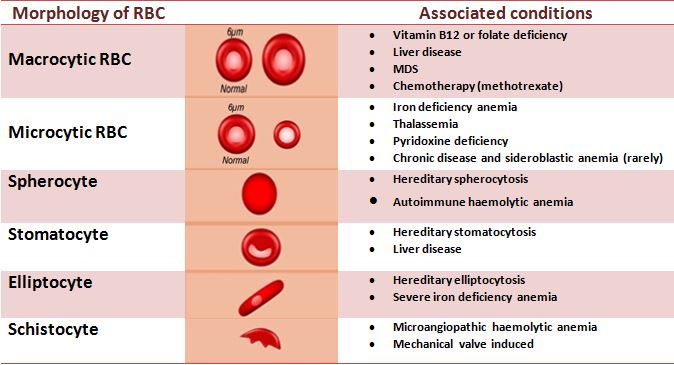 The basis of pathogenesis is a violation of the formation of hemoglobin, in which the iron molecule plays the main role. A reduced amount of protein that carries the blood affects the state of the body. Lack of oxygen has common signs of anemia, but with iron deficiency there are still some specific symptoms – hair loss, problems with nails, worsening of the heart, digestive tract. Sometimes there are distorted taste preferences – the desire to eat chalk or paint. This is all due to iron deficiency. The disease is more often observed in children, women during pregnancy, elderly patients. Laboratory diagnosis of iron deficiency involves an analysis of blood proteins that carry iron, the ability of blood serum to bind the trace element and other indicators that complement the usual diagnostic program for anemia.
The basis of pathogenesis is a violation of the formation of hemoglobin, in which the iron molecule plays the main role. A reduced amount of protein that carries the blood affects the state of the body. Lack of oxygen has common signs of anemia, but with iron deficiency there are still some specific symptoms – hair loss, problems with nails, worsening of the heart, digestive tract. Sometimes there are distorted taste preferences – the desire to eat chalk or paint. This is all due to iron deficiency. The disease is more often observed in children, women during pregnancy, elderly patients. Laboratory diagnosis of iron deficiency involves an analysis of blood proteins that carry iron, the ability of blood serum to bind the trace element and other indicators that complement the usual diagnostic program for anemia. This explains the fact that the disease often occurs in those who have refused to use such products. This vitamin is the main participant in the formation of new blood cells – erythrocytes. The cause of the pathology may lie in endogenous factors – for example, with a deficiency of the Castle factor. It is a protein that is produced by the cells of the gastric mucosa and promotes the body’s intake of the vitamin from food. Anemia can occur after surgery, during which part of the intestine or stomach is removed. It could also be a vitamin deficiency. As a rule, a certain supply of a substance in the body is designed for several years, which explains the fact that the development of anemia occurs gradually even after a change in eating habits. The cause may be an inflammatory process in the tissues of the gastrointestinal tract, taking certain medications, a violation of the transport of the vitamin from the blood into the intracellular space, as well as an increased consumption of the vitamin by the body.
This explains the fact that the disease often occurs in those who have refused to use such products. This vitamin is the main participant in the formation of new blood cells – erythrocytes. The cause of the pathology may lie in endogenous factors – for example, with a deficiency of the Castle factor. It is a protein that is produced by the cells of the gastric mucosa and promotes the body’s intake of the vitamin from food. Anemia can occur after surgery, during which part of the intestine or stomach is removed. It could also be a vitamin deficiency. As a rule, a certain supply of a substance in the body is designed for several years, which explains the fact that the development of anemia occurs gradually even after a change in eating habits. The cause may be an inflammatory process in the tissues of the gastrointestinal tract, taking certain medications, a violation of the transport of the vitamin from the blood into the intracellular space, as well as an increased consumption of the vitamin by the body. In addition to the general symptoms of anemia, vitamin B12 deficiency causes ulcers on the oral mucosa, a violation of innervation, which is manifested by a deterioration in sensitivity, tingling and numbness, impaired memory and thinking. Additional tests involve an assessment of the amount of vitamin in the body, the study of pathologies that lead to its deficiency. The treatment will also be specific – it consists in the additional use of vitamin preparations, the normalization of the state of the digestive organs. Vitamin B12 is involved not only in the formation of red blood cells – its functions in the body are diverse, which is reflected in multiple complications of anemia, if the condition is not corrected.
In addition to the general symptoms of anemia, vitamin B12 deficiency causes ulcers on the oral mucosa, a violation of innervation, which is manifested by a deterioration in sensitivity, tingling and numbness, impaired memory and thinking. Additional tests involve an assessment of the amount of vitamin in the body, the study of pathologies that lead to its deficiency. The treatment will also be specific – it consists in the additional use of vitamin preparations, the normalization of the state of the digestive organs. Vitamin B12 is involved not only in the formation of red blood cells – its functions in the body are diverse, which is reflected in multiple complications of anemia, if the condition is not corrected. Violation of vitamin absorption is observed in the pathology of digestion, during frequent urination, against the background of taking drugs that slow down the metabolism of vitamin B9. An increased consumption of folic acid accompanies oncological diseases, hematopoietic disorders, and infectious pathology. Symptoms of hypoxia in this type of anemia are supplemented by stool disorders, numbness in the muscles of the arms and legs, weakness of muscle tissue, distortion of taste perception, and emotional lability. Laboratory diagnosis of folate deficiency anemia includes such specific methods as the study of the level of the substance, as well as vitamin B12. In addition to laboratory tests, it is necessary to clarify the cause of the development of such a condition, for which instrumental studies are carried out. Establishing the cause will make the treatment more effective and speed up its result. Complications of anemia include a lack of other blood elements, the occurrence of many ulcerative necrotic processes, nausea and vomiting, and a decrease in the body’s immune defenses.
Violation of vitamin absorption is observed in the pathology of digestion, during frequent urination, against the background of taking drugs that slow down the metabolism of vitamin B9. An increased consumption of folic acid accompanies oncological diseases, hematopoietic disorders, and infectious pathology. Symptoms of hypoxia in this type of anemia are supplemented by stool disorders, numbness in the muscles of the arms and legs, weakness of muscle tissue, distortion of taste perception, and emotional lability. Laboratory diagnosis of folate deficiency anemia includes such specific methods as the study of the level of the substance, as well as vitamin B12. In addition to laboratory tests, it is necessary to clarify the cause of the development of such a condition, for which instrumental studies are carried out. Establishing the cause will make the treatment more effective and speed up its result. Complications of anemia include a lack of other blood elements, the occurrence of many ulcerative necrotic processes, nausea and vomiting, and a decrease in the body’s immune defenses.
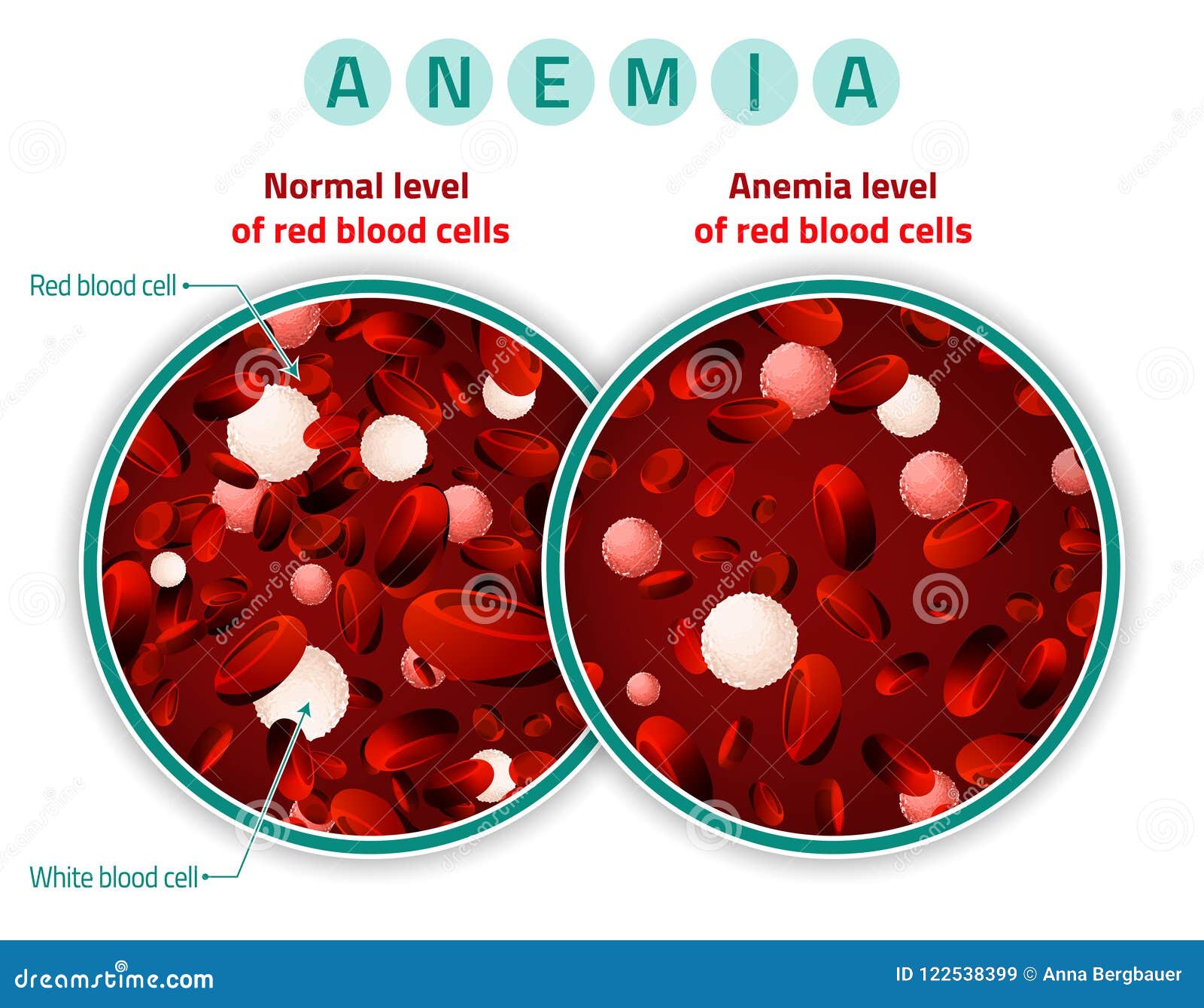 Posthemorrhagic anemia occurs either after the loss of a significant volume of circulating blood, or with permanent damage to the blood vessels, which most often occurs in the internal organs. Significant surgical intervention, pathological menstruation, trauma, and pathology of the digestive tract can be the cause. In this case, it is possible to determine the mechanism of anemia by characteristic features in the general blood test, as well as due to a detailed examination of the body.
Posthemorrhagic anemia occurs either after the loss of a significant volume of circulating blood, or with permanent damage to the blood vessels, which most often occurs in the internal organs. Significant surgical intervention, pathological menstruation, trauma, and pathology of the digestive tract can be the cause. In this case, it is possible to determine the mechanism of anemia by characteristic features in the general blood test, as well as due to a detailed examination of the body.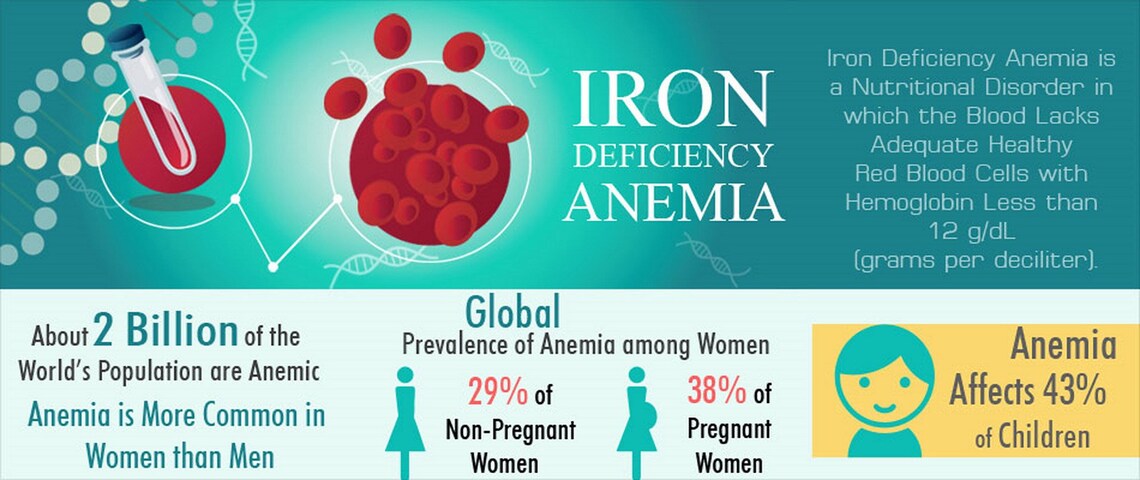 The destruction of red blood cells leads to the formation of bilirubin, an extremely toxic substance that can lead to intoxication of the body. Such anemia is congenital and acquired. Congenital tendency to hemolysis accompanies intrauterine development mutations, genetic pathologies. Acquired pathology occurs against the background of an infectious process, disruption of the liver, taking certain medications, transfusion of incompatible blood. Recognize hemolytic anemia at the clinical stage is possible by the following signs: icteric color of the skin, convulsions, fever, an increase in the size of the liver and spleen. Diagnosis includes laboratory and instrumental methods that will confirm the specificity of anemia and indicate its cause. Depending on the cause of hemolysis, treatment tactics are selected, therefore it is so important to establish what led to this condition.
The destruction of red blood cells leads to the formation of bilirubin, an extremely toxic substance that can lead to intoxication of the body. Such anemia is congenital and acquired. Congenital tendency to hemolysis accompanies intrauterine development mutations, genetic pathologies. Acquired pathology occurs against the background of an infectious process, disruption of the liver, taking certain medications, transfusion of incompatible blood. Recognize hemolytic anemia at the clinical stage is possible by the following signs: icteric color of the skin, convulsions, fever, an increase in the size of the liver and spleen. Diagnosis includes laboratory and instrumental methods that will confirm the specificity of anemia and indicate its cause. Depending on the cause of hemolysis, treatment tactics are selected, therefore it is so important to establish what led to this condition. Sometimes only a deficiency of red blood cells can occur. In any case, hypoxia is observed, a violation of oxygen transport in the tissues. This type of anemia can also be congenital or acquired. Among the causes are genetic mutations, exposure to radiation, chemotherapy, poisoning with certain substances, drugs. Clinical manifestations of hypoplastic anemia occur gradually and very slowly. In addition to the usual symptoms of anemia, one can distinguish a decrease in immunity, the occurrence of multiple inflammatory, purulent, necrotic processes, slow wound healing, and frequent colds. There may be hemorrhages with minor damage to the vessel, bleeding. It is necessary to study the internal organs, lymph nodes, bone marrow. Aplastic anemia has a characteristic clinical picture, specific changes in the analyzes. Treatment is carried out with potent drugs, and sometimes surgical methods are also needed. The main point is the timeliness of the start of treatment – the earlier it is started, the better the recovery rates and prognosis.
Sometimes only a deficiency of red blood cells can occur. In any case, hypoxia is observed, a violation of oxygen transport in the tissues. This type of anemia can also be congenital or acquired. Among the causes are genetic mutations, exposure to radiation, chemotherapy, poisoning with certain substances, drugs. Clinical manifestations of hypoplastic anemia occur gradually and very slowly. In addition to the usual symptoms of anemia, one can distinguish a decrease in immunity, the occurrence of multiple inflammatory, purulent, necrotic processes, slow wound healing, and frequent colds. There may be hemorrhages with minor damage to the vessel, bleeding. It is necessary to study the internal organs, lymph nodes, bone marrow. Aplastic anemia has a characteristic clinical picture, specific changes in the analyzes. Treatment is carried out with potent drugs, and sometimes surgical methods are also needed. The main point is the timeliness of the start of treatment – the earlier it is started, the better the recovery rates and prognosis.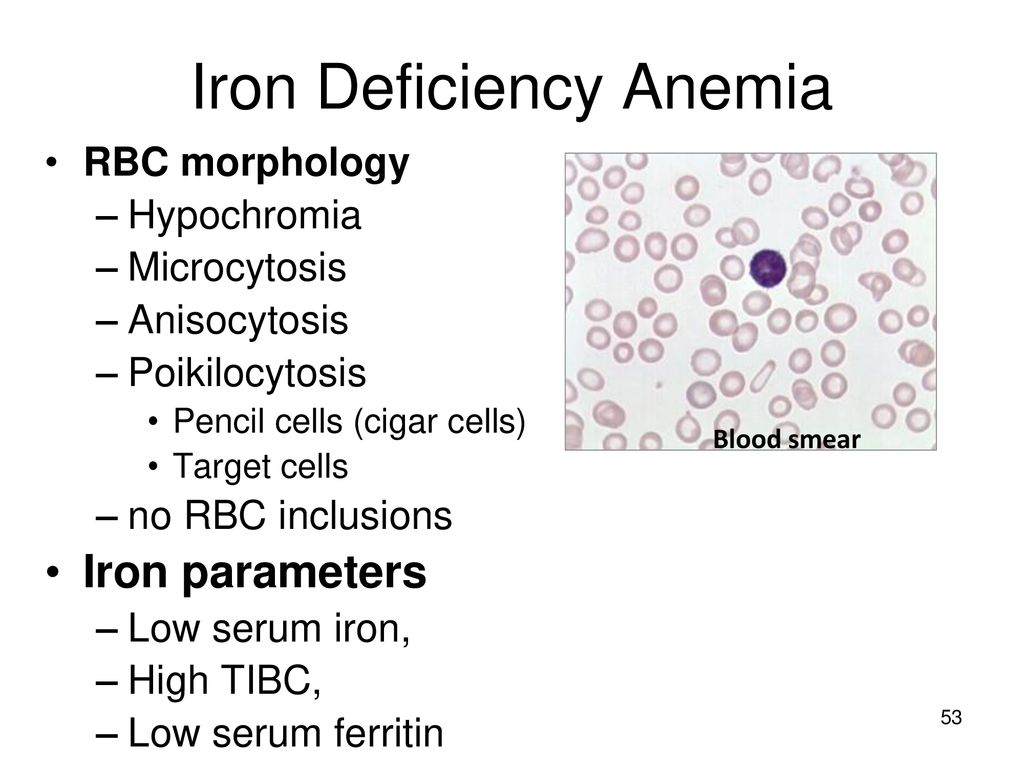
 It is biochemical analysis that helps to calculate the level of bilirubin and its fractions. thus, this manipulation is required to clarify the type of anemia. The analysis allows you to evaluate most of the processes in the body, provides comprehensive information about the work of internal organs.
It is biochemical analysis that helps to calculate the level of bilirubin and its fractions. thus, this manipulation is required to clarify the type of anemia. The analysis allows you to evaluate most of the processes in the body, provides comprehensive information about the work of internal organs.
 Also, blood loss is a sign of gastrointestinal pathology, which must be detected and treated. If you delay in finding the cause of anemia, the disease can progress, and the later stage of the process, the more difficult it is to treat.
Also, blood loss is a sign of gastrointestinal pathology, which must be detected and treated. If you delay in finding the cause of anemia, the disease can progress, and the later stage of the process, the more difficult it is to treat.